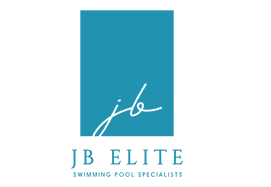The pump is an essential component of your swimming pool, as it helps to keep the water clean. By drawing water from the pool, forcing it through the filter, and recirculating it, the pump keeps water clean, free from debris, and safe. Like all mechanical components, the pump can experience technical problems occasionally, but such is its crucial role in preserving the cleanliness and hygiene of the water, your swimming pool can’t function without it.

The Signs of Common Swimming Pool Pump Problems
Regular maintenance checks on the pool pump are essential to identify the early signs of a mechanical problem; failing to act on diminished performance could lead to a more costly replacement becoming inevitable.
A Leaking Pump
Swimming pool pumps house several components that become worn or degraded over time, such as shaft seals, O-rings, and thread sealants. A leak will occur if even tiny gaps appear in seals, so regular inspection of components, especially seals, will help to alert you to a developing problem.
Abnormal Pump Noises
A swimming pool pump should operate with minimal noise, so the sudden onset of unusual sounds may be indicative of a mechanical fault. However, not all sounds indicate that a replacement pump is necessary!
Rattles can suggest that the pump unit is incorrectly fixed to its base. A remedy is to adjust the position of the pump or place a rubber mat underneath to absorb any movement. Banging or knocking can be a sign of cavitation, which occurs when the pump operates without sufficient water. The impeller may rotate with excessive speed, creating abnormal sounds. To solve the problem, check if the filter or impeller is blocked, and assess if the pump size is adequate for the size of the pool.
The Pump Won’t Circulate Water
A build-up of debris is a common cause of the water not circulating, so check the pump baskets, skimmer, impeller, and filter for accumulations. Cleaning these components to remove the debris should resolve the problem. An air leak in the suction can also cause water to circulate inadequately. In minor cases, you may see a stream of bubbles under the lid of the pump, while more severe leaks may be spotted when bubbles enter the pool through the return jet.
The Motor Won’t Turn On
If the motor won’t start, and it is emitting no sounds, then a power supply issue may be the cause, so this angle should be investigated in the first instance. A hum or clicking sound within the motor, however, would indicate that the problem is confined to the unit itself, possibly the capacitor. If the pump starts but shuts down quickly, it may be overheating. This may be caused by a vent blockage or fan fault.
The Pump Sucks in Air
Air leaks are problematic because they prevent the optimum circulation of water in the pool. The causes are varied but include inadequate sealing of the threads where the pipe enters the pump, a badly-fitting pump lid or lid O-ring or a loose drain plug. A simple test is to spray shaving foam on the suction side joints and fitting. Once the pump is operating, if dimples appear on the foam, then it indicates the pump is trying to suck in the air, and you can carry out the necessary repairs or replacements.
JB Elite: for All Your Swimming Pool Pump Problems
At JB Elite, our experts can diagnose the problem with your pool pump quickly and accurately, and advise you on the most cost-effective solution to return your pool to full working order. We aim to complete repairs with minimum disruption and, for peace of mind, all our work is guaranteed. For advice about any aspect of swimming pool maintenance, or to obtain a no-obligation quote, simply get in touch today.

